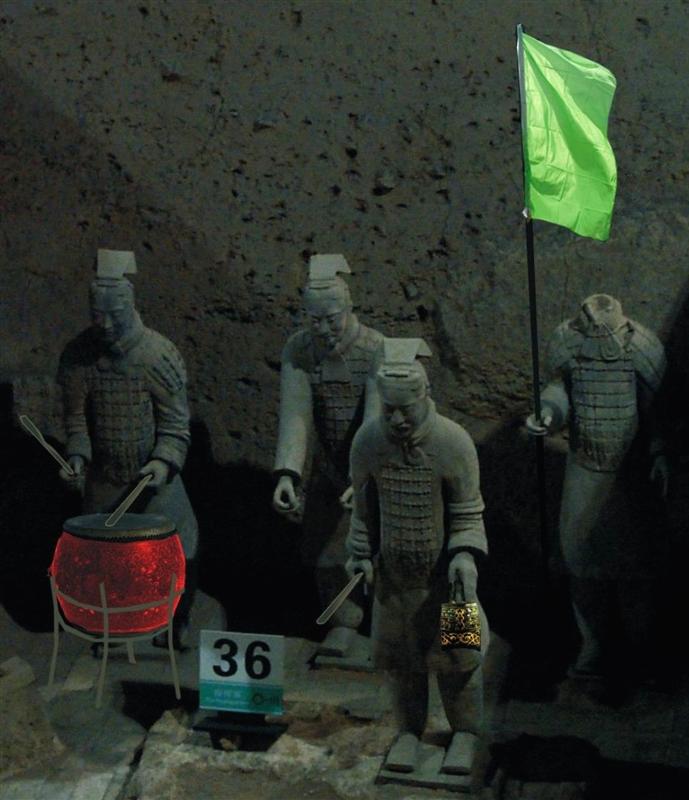| Terracotta Warriors report 3 | |
|---|---|
| Dec 1, 2007 12:55 | |
 | In Pit Number Two, it can be seen that the northern p art of the pit is four meters lower than the south. This is because the mountain, where the floods originate, is located to the south, producing uneven deposit patterns of flood material. From this it can be concluded that the earth on top of the wooden ceiling was brought by flood waters, and was not placed there 2,200 years ago by the First Emperor's workers. The terrain around Xian is mostly loess, a special kind of silt or clay which erodes easily when soaked with rainwater. This supports the supposition that the terracotta figures were buried in successively deeper layers of earth after the initial burial, not interred seven meters deep immediately upon the emperor's death. Loess is also relatively soft, and this special geological property has made it possible for people in Shaanxi to hollow out caves in the hillsides. People have been living in these caves for several thousand years, and there are still more than on e million people living in cave dwellings around Xian and throughout Shaanxi province. If the Emperor had indeed wanted the the figures safely buried underground, it would have been much more reasonable and secure to place them in caves rather than bury them under a wooden ceiling vulnerable to the destructive forces of time and decomposition. After several years of observation and study, I have concluded that the evidence points to an entirely different explanation of the warriors' history than the one that is currently accepted. It is improbable that the rebels penetrated the pits where the warriors were buried, as no looting is evident and scans of the mausoleum to the west do not indicate that it has been opened since its initial construction and burial. Physically speaking, once the complex was buried, as the excavators assume it was upon completion, it would have been impossible for the rebels to burn the wooden ceiling due to a lack of air and the dampness of the wood. The depth of the complex also varies markedly from the south to the north, suggesting that it was not buried to its present depth by its builders, but instead was gradually covered by flood material brought down from the mountain during the rainy season. This evidence shows that the existing explanation is inadequate. Drawing on my knowledge of ancient religious practices and historical traditions, which are evident in the construction and choice of location for the First Emperor's tomb, I believe that the Emperor ordered the complex to be built as a future sacrifice to his spirit after his death. This explanation matches not only the physical evidence revealed during excavation, but also the traditional beliefs that predominated at the time of the tomb's construction. yahoo.com|clarenceguo (0086)13519197819 |
| Dec 6, 2007 08:24 | |
 | Why did the Emperor Qin build his mausolaum there? If you want read this report,leave a massage here and send me a yahoo.com|e-mail.clarenceguo more in the future: Is it true that the terracotta warriors were discovered only in 1974 ? How did pit No.3 control the other 2 pits ? The battle formation of 3 pits of the warriors. |
| Dec 10, 2007 08:27 | |
 | I dont think the terracotta warriors were only discovered in 1974. It was believed that Shaanxi villagers had been digging bits and pieces from generation to generation Very interesting topic, if you'd like to share, please go on posting, or maybe putting it in a cohrerent article? |
Post a Reply to: Terracotta Warriors report 3






 Copyright © 1998-2025 All rights reserved.
Copyright © 1998-2025 All rights reserved.